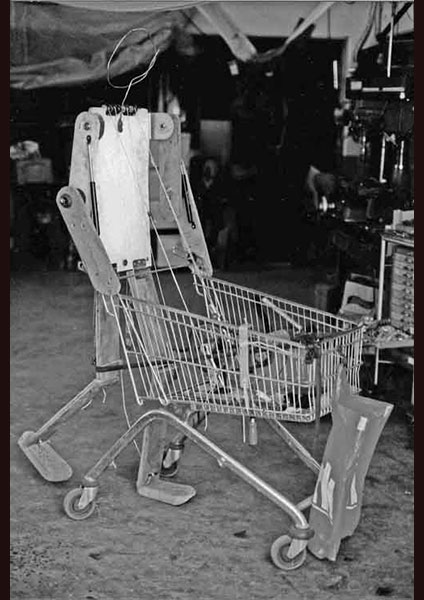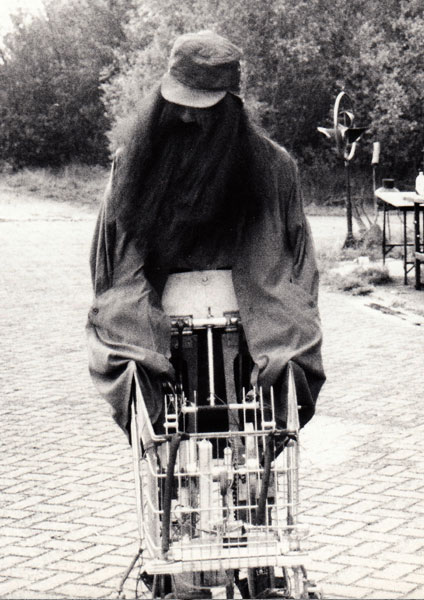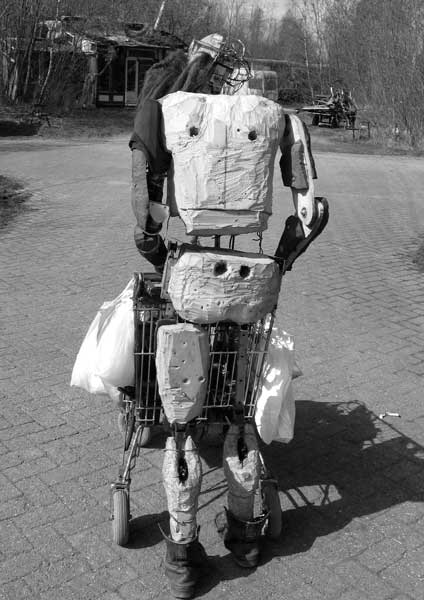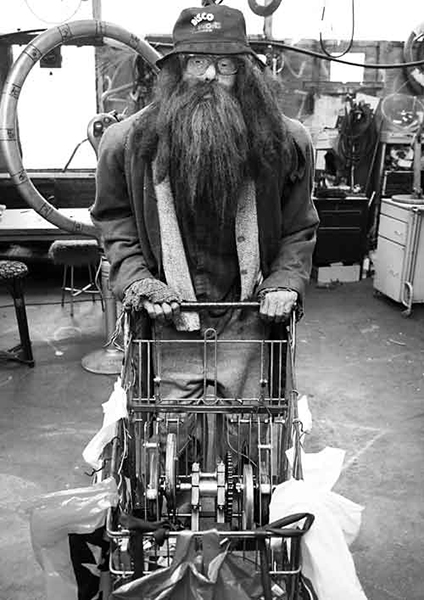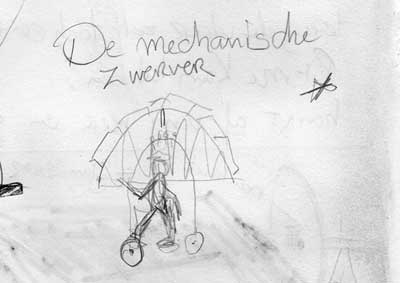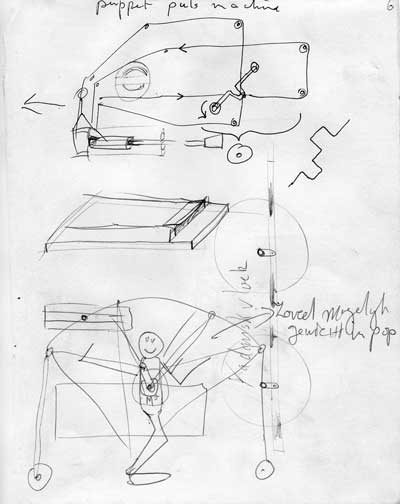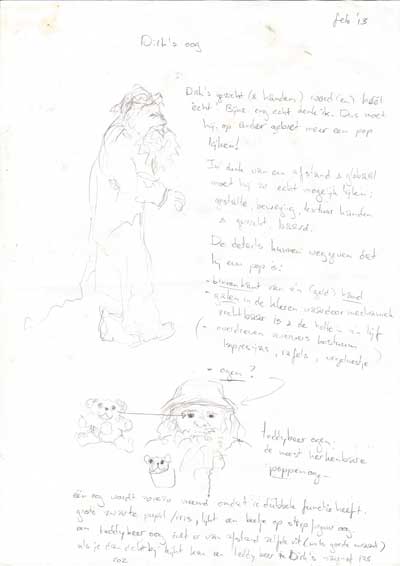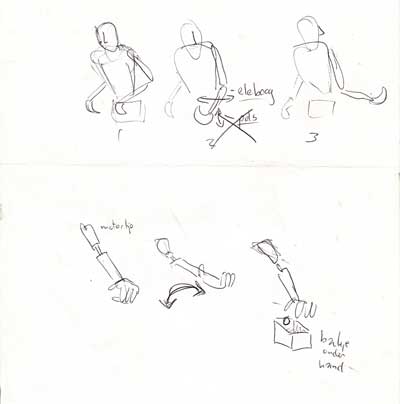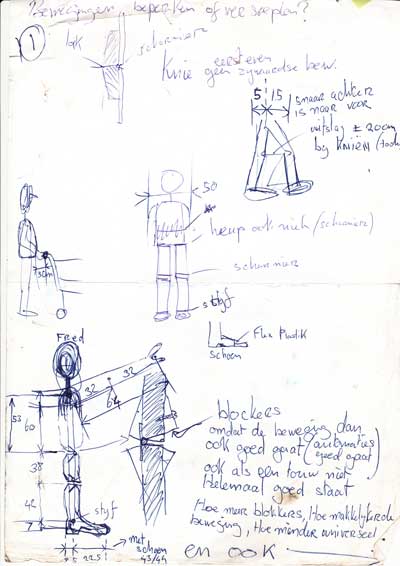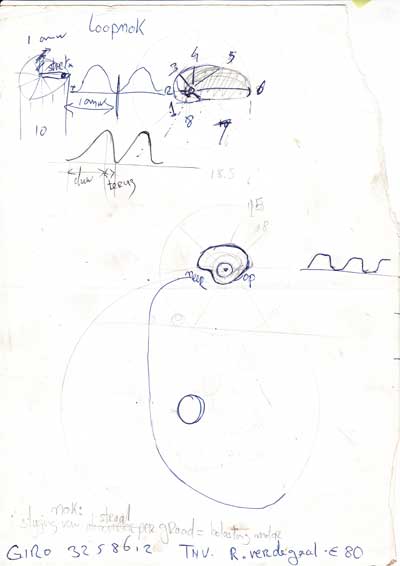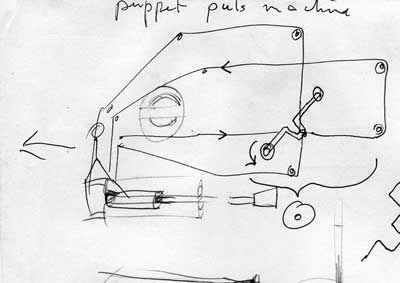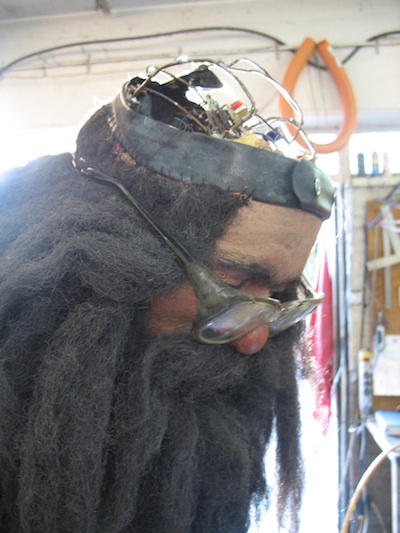
Text based on an interview related to anthropomorphism in performance art and robotics.
'How do I set the elements making Dirk realistic?
*1. First of all the walking:
I have put the most time in the walking-mechanism. It was important to me that the walking was real. I could have made it very easy and just put a motor on one of the shopping-trolley wheels. But now the walking looks real because it is real. It's actually the only part of the robot with an autonomous aspect because the leg-movement is determent by 4 disks; the shape of the disks is the 'software'
The pressure of the feet is set on a max of 14 kg. And therefore adjusts to the street surface.
*2. The head movement: The head-servos are strong and precisely mounted without any play or vibration and have rapid reaction.
All proportions are carefully reproduced (with my own body as an example *) the degree of freedom and the angle of the joints are also set with a lot of care.
*3. We are both puppeteers and have been training to work the remote control for years now. We somehow learned to control two joysticks with one hand leaving the other hand free for 'acting'
For some mysterious reason we are both using our left hand for the joy sticks (we are both right-handed!)
Several functions are combined to fit all the functions on just two joysticks.'
